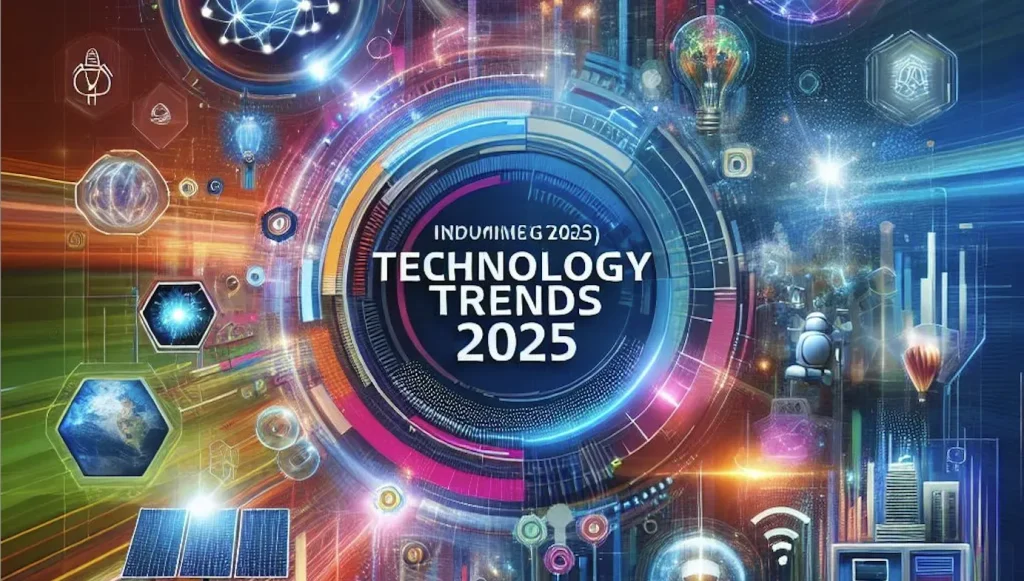Sustainable technology sits at the heart of a resilient, low-carbon economy, shaping the choices we make every day. As a broad family of innovations, it aims to reduce environmental impact while boosting performance, safety, and affordability. From green technology to sustainable innovations, these advances rewire energy, mobility, and manufacturing. By turning scientific breakthroughs into practical, scalable choices, it helps communities thrive without compromising the planet. This balance of engineering, policy, and user behavior defines the modern toolkit for carbon-neutral solutions and eco-friendly devices.
To frame this topic through another lens, we can think in terms of clean tech and low-carbon innovations that power modern societies. Other terms like eco-friendly engineering, sustainable design, and climate-smart systems emphasize the same goal of reducing footprint while maintaining quality of life. This LSI-driven approach helps search engines understand the topic and guides readers toward related concepts such as renewable energy tech, energy efficiency, and circular design. By highlighting these connected ideas, we make it easier for audiences to explore practical applications—from efficient buildings to green manufacturing and responsible consumption. Ultimately, the narrative centers on technologies that enable cleaner energy, smarter resource management, and resilient communities.
Sustainable technology: Foundations for a Low-Carbon Economy
Sustainable technology is more than a buzzword; it is the backbone of a resilient, low‑carbon economy. It blends green technology with engineering, design, and policy to reduce environmental impact while improving safety, performance, and affordability. Across energy systems, mobility, and manufacturing, sustainable technology translates scientific breakthroughs into practical choices that empower communities without compromising planetary health.
The main drivers are climate urgency, resource constraints, and rising demand for corporate responsibility. Governments, businesses, and individuals increasingly seek cleaner energy and transparent supply chains. This shift has moved green technology from niche to mainstream, powering homes, factories, vehicles, and cities through scalable sustainable innovations that blend ecology, economics, and technology.
Green technology and sustainable innovations shaping everyday life
Green technology encompasses tools and processes that reduce environmental harm while maintaining quality of life. It spans energy generation, efficiency, water stewardship, waste reduction, and sustainable materials, all underpinned by an interdisciplinary approach that combines chemistry, data analytics, materials science, AI, and policy.
In practice, sustainable innovations appear in forms from smart thermostats and intelligent lighting to durable materials that extend infrastructure life. These solutions are not only about saving energy; they reshape behavior and systems. When a building optimizes climate control with sensors and a city uses predictive maintenance for water networks, communities gain reliability, reduced costs, and better service, while supporting eco-friendly devices and circular design where relevant.
Renewable energy tech and the grid: powering a resilient future
A core pillar is renewable energy tech. Solar, wind, geothermal, and other sources are expanding as costs fall and performance improves. The real game-changer is how these sources interact with the grid; digital grids, storage, and smart controls balance supply and demand in real time to keep lights on and emissions down.
For businesses and communities, benefits include price stability, local jobs, and new revenue streams such as demand response and microgrids. Pairing renewable energy tech with intelligent grid management improves reliability while lowering emissions, advancing carbon-neutral solutions across larger parts of the economy.
Eco-friendly devices and circular design: extending lifecycles
Eco-friendly devices—from appliances to wearables—are increasingly built with circularity in mind. Durable materials, modular architectures, and repairable components extend lifespans and reduce e-waste, cutting environmental footprints across a product’s lifecycle.
This approach expands beyond the gadget itself to manufacturing, distribution, use, and end-of-life. Companies are adopting take-back programs, recycled or bio-based materials, and product-as-a-service models that encourage longer lifespans and responsible disposal, reinforcing sustainable innovations and eco-friendly devices where possible.
Carbon-neutral solutions and policy momentum
To reach climate targets, organizations pursue carbon-neutral solutions—net-zero strategies that balance residual emissions with removals or offsets. Achieving this balance often combines energy efficiency, renewable energy procurement, and technologies such as carbon capture, utilization, and storage (CCUS) in industrial settings.
Policy also plays a critical role in accelerating progress. Regulations and standards—ranging from building codes to vehicle emissions requirements—guide investment toward cleaner options and drive market competition toward better performance. When policy aligns with market incentives, sustainable technology becomes more accessible and affordable for a broader audience, advancing carbon-neutral solutions and green technology adoption.
Practical adoption: individuals and businesses
The promise of Sustainable technology extends beyond labs into daily life. Individuals can contribute through smarter consumption choices, proper electronics recycling, and adopting energy-saving habits at home. Businesses, meanwhile, can integrate sustainable technology into procurement strategies, facilities management, and product development, aligning operations with green technology, sustainable innovations, and eco-friendly devices.
A practical outlook includes steps like conducting energy audits to identify high‑return improvements, exploring on-site renewable energy options, designing products for repairability, and using data-driven optimization—sensors, AI, and analytics—to minimize resource use without compromising performance. Considering carbon-neutral solutions in projects ensures operations align with long‑term climate goals.
Frequently Asked Questions
How does sustainable technology, including green technology, help reduce energy use in homes and buildings?
Sustainable technology leverages energy efficiency and smarter systems to cut consumption. It includes green technology like smart thermostats, LED lighting, and sensor-enabled HVAC, plus data analytics that optimize performance. By auditing energy use and deploying high-return upgrades, households and facilities lower bills and emissions while maintaining comfort.
What are sustainable innovations driving efficiency in manufacturing and supply chains?
Sustainable innovations blend chemistry, materials science, AI, and policy to reduce waste and improve performance. In practice, this means predictive maintenance, smarter materials, water conservation, recycling, product-as-a-service, and transparent sourcing. These changes lower costs, reduce environmental impact, and enable resilient operations.
How does renewable energy tech integrate with modern grids to improve reliability and reduce emissions?
Renewable energy tech such as solar, wind, and geothermal powers generation that, when paired with digital grid controls and storage, balances supply and demand in real time. Smart grids and energy storage improve reliability, enable demand response, and lower emissions, helping communities move toward carbon-neutral solutions.
What are eco-friendly devices and how do they support circular design and waste reduction?
Eco-friendly devices are designed for durability, repairability, and recyclability, with modular architectures and take-back programs. Using recycled or bio-based materials and offering product-as-a-service models extend lifespans and minimize waste, aligning manufacturing and consumption with circular design principles.
What role do policies and market trends play in advancing carbon-neutral solutions across industries?
Policy, standards, and market incentives push cleaner options by guiding investments toward energy efficiency and renewable energy procurement. Net-zero strategies often combine efficiency gains with renewable energy, storage, and, where appropriate, carbon capture, utilization, and storage, accelerating carbon-neutral solutions across sectors.
What practical steps can individuals and small businesses take to adopt green technology and sustainable innovations?
Start with energy audits to identify high-return improvements (HVAC, LED lighting). Explore on-site solar or green tariffs, and design products for repairability or choose services that extend lifespans. Use sensors, AI, and analytics to optimize resource use, and factor carbon-neutral solutions into projects from design to delivery.
| Key Point | Details |
|---|---|
| Definition | Sustainable technology is a broad set of innovations designed to reduce environmental impact while boosting performance, safety, and affordability; it sits at the intersection of engineering, design, and policy to power, move, and manufacture for communities without harming the planet. |
| Key drivers | Climate urgency, resource constraints, and rising corporate responsibility drive demand for cleaner energy, more efficient products, and transparent supply chains. |
| Main pillars | Green technology and sustainable innovations; Renewable energy tech and grid integration; Eco-friendly devices and circular design; Carbon-neutral solutions and policy momentum. |
| Interdisciplinary approach | Sustainable innovations combine chemistry with data analytics, materials science with AI, and policy with consumer behavior to drive practical impact. |
| Practical implementations | From smarter thermostats and efficient lighting to durable, repairable materials and product‑as‑a‑service models that extend lifespans and reduce waste. |
| Grid and energy storage | Renewables coupled with digital grids, storage, and smart controls balance supply/demand and increase resilience. |
| Policy & governance | Regulations and standards guide investment toward cleaner options, enabling broader access to sustainable technology. |
| Individual & business action | Energy audits, on‑site renewables, repairability, data‑driven optimization, and carbon‑neutral project considerations. |
| Future trajectory | Integration, inclusivity, and resilience guide adoption across homes, businesses, and communities; expansion into water, agriculture, and manufacturing. |
Summary
This table highlights the essential points about Sustainable technology, including its definition, drivers, core pillars, and practical implications for individuals and organizations. The table emphasizes how renewable energy, circular design, and policy play synergistic roles in advancing a low‑carbon, resilient economy.


